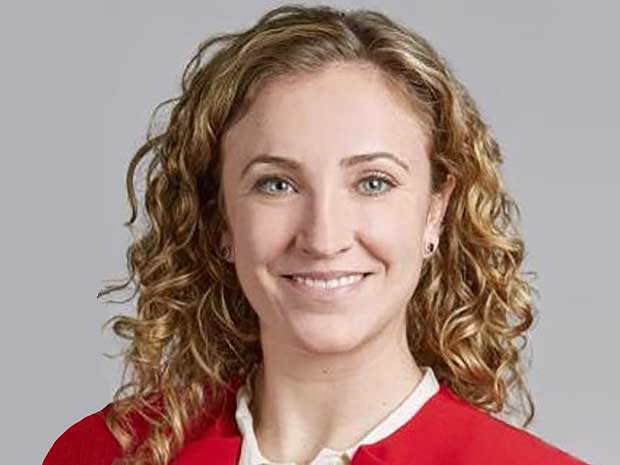Section 45Y clean electricity production tax credit: Overview
The clean electricity production tax credit is a credit for the number of kilowatt hours of electricity produced at a qualified facility. The electricity produced at the qualified facility must be:
- sold by the taxpayer to an unrelated person during the taxable year, or
- in the case of a qualified facility which is equipped with a metering device which is owned and operated by an unrelated person, sold, consumed or stored by the taxpayer during the taxable year.
The proposed regulations provide specific standards for maintaining and operating a metering device, which if met, allows a taxpayer to claim a 45Y credit not only on electricity sold, similar to section 45, but also electricity consumed or sold.
The qualified facility must be located in the United States or in a U.S. possession, placed in service after December 31, 2024, and the GHG emissions rate must be zero or less.
Special rules are provided for CHP property, including requirements on the production of total useful energy, the energy efficiency percentage of the CHP property, and how to calculate the electricity produced.
A qualified facility may be eligible for the section 45Y credit for the 10-year period beginning on the date it was originally placed in service.
In determining the amount of the credit, section 45Y(a)(2) provides a base amount and a higher alternative amount. The base amount is 0.3 cents. A qualified facility may qualify for the higher alternative amount of 1.5 cents if:
- The qualified facility has a maximum net output of less than 1 megawatt (as measured in alternating current),
- Construction of that facility begins before Jan. 29, 2023, or
- The qualified facility meets the PWA requirements of sections 45(b)(7) and 45(b)(8).
For more information on the PWA requirements, see RSM US’s coverage of proposed regulations on these rules.
The base amount and higher alternative amount are adjusted annually for inflation and may be increased by 10 percent for any qualified facility located in an energy community or if the domestic content bonus requirement is satisfied.
Section 48E clean electricity investment credit: Overview
The clean electricity investment credit is an amount equal to the qualified investment in a qualified facility multiplied by the applicable credit percentage. The term “qualified facility” means a facility:
- Which is used for the generation of electricity,
- Which is placed in service after Dec. 31, 2024;
- For which the anticipated GHG emissions rate is not greater than zero;
- And does not include any facility which a credit was determined under sections 45, 45J, 45Q, 45U, 45Y, 48 or 48A.
Energy storage technologies (EST) are eligible under section 48E. EST is defined to mean thermal energy storage property and property that receives, storages and delivers energy for conversion to electricity and has a nameplate capacity of not less than 5 kWh.
“Qualified investment” generally means the basis of any qualified property placed in service during the taxable year which is part of a qualified facility plus certain expenditures.
A credit under section 48E is subject to recapture if the GHG emissions rate for a qualified facility is greater than 10 grams of CO2e per KW after a credit is allowed.
The section 48E credit has a base rate of 6 percent with an alternative rate of 30 percent if PWA is satisfied. The credit under section 48E may be increased by 10 percentage points for satisfying domestic content and energy community bonus adders. Additionally, the low-income communities bonus credit program, an application-based program for an allocation of a limited capacity allocation, may increase the applicable percentage by up to 20 percentage points. IRS updates guidance on the low-income communities bonus credit program (rsmus.com).
Proposed regulations for tech-neutral credits
The proposed regulations for the tech-neutral credits incorporate several key concepts included in recently proposed regulations on the energy credit under section 48. For example, the existing function-oriented approach to identifying components of qualified facilities was replicated. The proposed regulations place an emphasis on the identification of the unit of qualified facility, which includes qualified functionally interdependent components of a property owned by the taxpayer that are operated together and that can operate apart from other property to produce electricity. Property that’s not part of the unit of qualified facility may still qualify if it’s considered an integral part of a qualified facility. Integral property may be shared by multiple qualified facilities.
Additionally, the tech-neutral proposed regulations followed the ‘80/20 Rule” to retrofitted ITC energy property and the rules for separate ownership of components of an energy property.
The tech-neutral proposed regulations did include rules that address the expansion of qualified facilities and incremental production, drawing a useful distinction from a retrofitted facility. Under these rules, the tech-neutral credit is limited to the increased amount of electricity produced at the facility due to the expansion or incremental production.
The proposed regulations also address the credit phase-out rules specifying that the annual GHG emissions from the production of electricity in the United States for any calendar year must be separately assessed using data from the U.S. Energy Information Administration’s Electric Power Annual and the U.S. Environmental Protection Agency Inventory of U.S. Greenhouse Gas Emissions and Sinks.
Proposed regulations on GHG emissions rates
To qualify for either tech-neutral credit, the anticipated GHG emissions rate of the qualified facility cannot be greater than zero. The proposed regulations provide the rules for determining a qualified facility’s anticipated GHG emissions rate. Certain on-site emissions are excluded when determining the GHG emissions rates. This could include, for example, emissions from routine operational and maintenance activities. In calculating the GHG emissions rate, greenhouse gases emitted into the atmosphere does not include any qualified carbon dioxide that is captured by the taxpayer and pursuant to section 45Q(f)(2) (a) disposed of by the taxpayer in secure geological storage, or (b) utilized by the taxpayer as described under section 45Q(f)(5).
The rules place qualified facilities in one of two categories for purposes of addressing its anticipated GHG emissions rate: facilities that produce electricity through combustion or gasification (C&G Facilities) and non-C&G Facilities. Focus is placed on GHG emissions by a facility that directly occur from the process that transforms an input energy source into electricity.
The tech-neutral credits require Treasury to annually publish a table of GHG emissions for types or categories of facilities, which a taxpayer must use. If the technology is not listed in the annual table, then the taxpayer must perform a lifecycle analysis (“LCA”) to determine the anticipated GHG emissions rate. The proposed regulations identify the requirements that a LCA must comply with, including:
- Starting boundary
- Ending boundary
- Baseline
- Offsets and offsetting activities
- Principles for included and excluded emissions (e.g., direct and indirect emissions that must be accounted for)
- Alternative fates and avoided emissions
As an alternative to the LCA, the taxpayer may seek a letter from the Department of Energy (DOE) confirming the emissions value of the qualified facility. If the taxpayer utilizes either the LCA or the DOE to demonstrate zero emissions, it must file a petition with the IRS to allow for the use of the PER. The proposed regulations provide the process for submitting the PER and require substantial documentation.
Washington National Tax takeaways
The proposed regulations contain useful information for taxpayers as they begin to plan for projects that have a placed in-service date after 2024. Taxpayers should consider:
- For those projects that begin construction prior to 2025, whether the project qualifies under sections 45, 45Y, 48 or 48E
- Whether they will need an LCA, letter from the DOE and to request a PER
- Whether modifications to existing facilities will be subject to the new rules for expansions, incremental production or retrofitted facilities
- How the annual reporting of GHG emissions rate may result in a recapture event separate from the legacy recapture rules under section 50 for section 48E qualified facilities
- How the PWA requirements will impact the value of the credit
For projects that begin construction after Jan. 1, 2025, taxpayers will need to consider many of the same topics identified above. However, taxpayers will need to focus on the substantial documentation requirement
Treasury and the IRS have requested comments on several topics related to GHG emission rates for C&G Facilities including the treatment of renewable natural gas (RNG) and fugitive sources of methane and carbon capture and sequestration. Treasury and the IRS intend to provide rules addressing facilities that produce electricity using biogas, RNG or fugitive sources of methane and have indicated the intent to require that any electricity produced must originate from the first productive use. Taxpayers impacted by these rules should consider submitting questions and attending the public hearing.
The language on the expansion of qualified facilities and incremental may be useful for qualified facilities that are adding capacity and incremental production and are not traditional retrofits.






